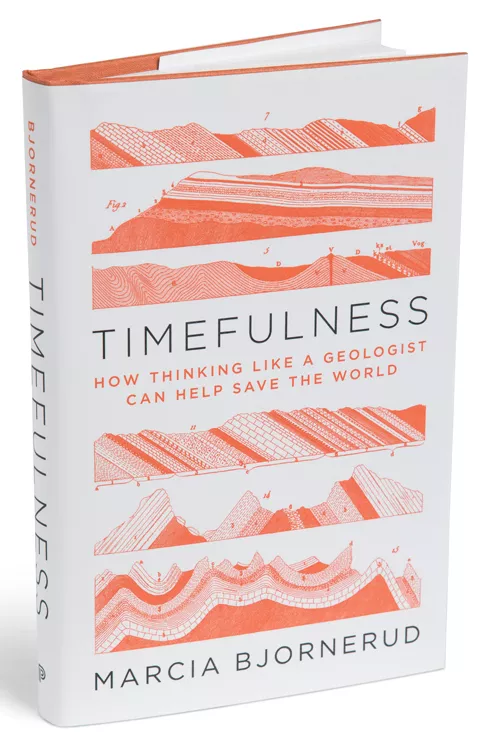Rocks Hold the Key to the History, and Future, of the Planet
A geologist digs for the story of Earth's evolution

Geologist Marcia Bjornerud's new book has a hyperbolic title, Timefulness: How Thinking Like a Geologist Can Help Save the World (Princeton University Press, 2018). That's just what a geologist would say. But Timefulness is a charmer and makes a strong case for thinking like Bjornerud.
The book's geologic descriptions are delightful: Earth was once "a planetary milkshake" that "has unmixed itself over time." Uranium rose from the mantle to the earth's crust and settled like "cream at the top of a bottle of raw milk." A digression about the hunt for caves suitable for carbon capture and storage (they need to be porous enough to have holes but solid enough to keep gas from escaping) concludes that this quest is "a bit like valuing a friend for his big-hearted gregariousness but then expecting him to keep a juicy secret."
Most of the book's stories will be new to those who don't study rocks; the history of early geologists like William Smith, a 19th-century canal digger and mineral surveyor who kept noticing the same fossil patterns in ditches all across England, is particularly good. This close attention to landscape upended ideas of just how far back the past went. The theory of evolution, Bjornerud argues, could not have occurred without this temporal breakthrough.
That sense of the sheer expanse of geologic time—and how little of it has featured a climate in which humans can survive—is even more critical today, Bjornerud writes. "We are navigating recklessly toward our future using conceptions of time as primitive as a world map from the 14th century."
This article appeared in the November/December 2018 edition with the headline "Out of Time."
 The Magazine of The Sierra Club
The Magazine of The Sierra Club



